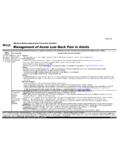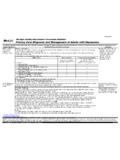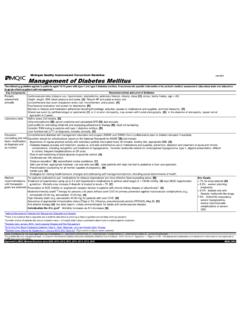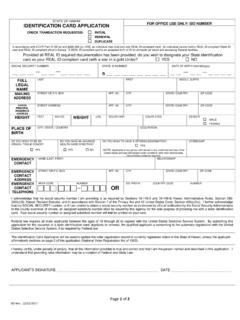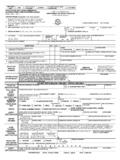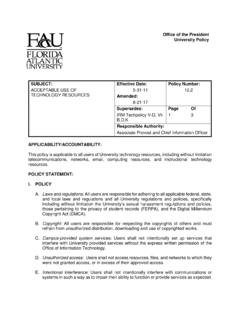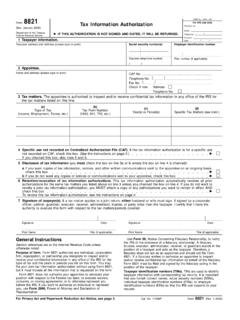Transcription of In Office Use of Sedation - MQIC
1 March 2017. Michigan Quality Improvement Consortium Guideline In Office Use of Sedation The following guideline recommends core principles that promote safety and quality in the delivery of Office -based procedures requiring Sedation or analgesia. Eligible Population Key Components Recommendation and Level of Evidence Providers performing Accreditation Moderate or higher levels of Sedation must be performed at a practice site accredited by one of the following organizations [D]: Office -based procedures w The Joint Commission ( ); Accreditation Association for Ambulatory Health Care ( );. using moderate Sedation American Association for Accreditation of Ambulatory Surgical Facilities ( ); American Osteopathic Association or analgesia, deep and AOA Healthcare Facilities Accreditation Program Sedation or analgesia, or Anesthesiology group/individual anesthesia provider accreditation by one of the above organizations would be an acceptable alternative general anesthesia to practice site accreditation.
2 (excludes minimal The requirement for accreditation is intended to meet the spirit of the American Medical Association's Core Principles for Improving Sedation and local Office -Based Surgery, which are shown in a modified form below. anesthesia) Patient selection Physicians should select patients for Office -based procedures using moderate Sedation or analgesia, deep Sedation or analgesia, or general anesthesia by criteria that include the American Society of Anesthesiologists (ASA) Physical Status Classification System, and they should document their ASA status. This guideline does not Physicians should only perform level III1 surgery for patients with ASA physical status III2 in a facility setting, not an Office setting, unless apply to formally specifically cleared by a physician [D].
3 Designated ambulatory surgery centers or Informed consent Procedures requiring moderate Sedation or analgesia, deep Sedation or analgesia, or general anesthesia must have a written informed hospital-based outpatient consent documented. facilities. Consent forms should be specific to each procedure and should meet the guidelines outlined by the Federation of State Medical Boards (FSMB). Quality Each practice must have a method for tracking and reporting adverse events in a manner consistent with the FSMB. Improvement Each practice must implement continuous quality improvement programs that include reducing adverse events and other problems [C]. Meetings to review outcomes must be held and documented no less than every six months. Each practice should consider a policy on apologies to patients for adverse or avoidable events.
4 Education Physicians must have completed an accredited post-graduate training program appropriate to the procedure performed. Hospital affiliation Physician practices performing Office -based surgery using moderate Sedation or analgesia, deep Sedation or analgesia, or general anesthesia must have the following: w Admitting privileges at a nearby hospital or a transfer agreement with another physician who has admitting privileges at a nearby hospital. w A current emergency transfer agreement maintained with a nearby hospital. Monitoring and Anesthesia providers must keep current credentials in advanced resuscitative techniques ( ACLS, ATLS, PALS) appropriate to the resuscitation types of services rendered. Post-anesthesia care unit RNs should demonstrate competency in advanced cardiac life support.
5 The site must have immediately available age- and size-appropriate monitoring and resuscitative equipment. Trained personnel must remain present until patient has met criteria for discharge from the facility. Other medical personnel with direct patient contact should at a minimum be trained in basic life support. Anesthesia Anesthesia providers administering or supervising moderate Sedation or analgesia, deep Sedation or analgesia, or general administration anesthesia should have appropriate education and training in the selection, administration and recovery from anesthetics. Deep Sedation or general anesthesia must be performed by either an anesthesiologist, or properly supervised certified registered nurse anesthetist or certified anesthesiologist assistant [D].
6 1. Level III Office surgery involves or reasonably should require the use of general anesthesia or major conduction anesthesia and preoperative Sedation . This includes the use of intravenous Sedation beyond that defined for level II surgery; general anesthesia with loss of consciousness and loss of vital reflexes with probable requirement of external support of pulmonary or cardiac functions; and major conduction anesthesia, epidural, spinal and caudal. (See ). 2. ASA Physical Status Classification System: P3 - A patient with severe systemic disease b Levels of Evidence for the most significant recommendations: A = randomized controlled trials; B = controlled trials, no randomization; C = observational studies; D = opinion of expert panel This guideline lists core principles.
7 It is based on the American Medical Association's The physician's guide to patient safety organizations, 2009 ( ). Individual patient considerations and advances in medical science may supersede or modify these recommendations. Approved by MQIC Medical Directors March 2009, 2011, 2013, 2015, 2017
